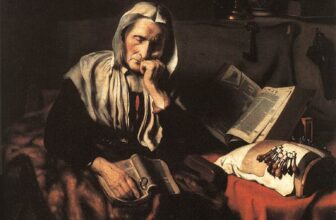
A Grand Entrance Captured in Paint
In the grand theater of European history, some moments are so richly layered with politics, power, and personal ambition that they seem destined to be immortalized in art. One such moment, both symbolic and politically charged, is the arrival of Marie de’ Medici at the bustling port of Marseille in 1600. Captured in oil and myth by the Flemish master Peter Paul Rubens, The Arrival of Marie de’ Medici at Marseille is not merely a painting, it is a spectacle, a celebration of royal prestige, and a carefully crafted piece of propaganda.
This extraordinary painting is part of the Marie de’ Medici cycle, a series of 24 grand canvases Rubens painted between 1622 and 1625. Commissioned by Marie herself, the cycle was designed to adorn the walls of the Luxembourg Palace in Paris and to cement her legacy as a powerful queen and regent of France. But among all the canvases, The Arrival of Marie de’ Medici at Marseille stands out for its theatricality, allegorical richness, and its vibrant depiction of a pivotal royal event.
A Queen’s Arrival, a Kingdom’s Spectacle
It was November 3, 1600, when Marie de’ Medici, an Italian noblewoman from the powerful House of Medici in Florence, set foot on French soil in Marseille. She had just completed a long voyage across the Mediterranean to marry King Henry IV of France, a union that had already been formalized by proxy in Florence a few months earlier. Her arrival was not simply a diplomatic or matrimonial event; it was a highly orchestrated political ceremony designed to introduce the future queen to her new subjects.
This transition, from Italian nobility to French royalty, was monumental. France, still healing from decades of religious wars, needed a symbol of continuity and legitimacy. Marie, as a Medici, brought not just wealth but a lineage deeply associated with patronage of the arts, papal politics, and Renaissance power. Her marriage to Henry IV was meant to stabilize the Bourbon dynasty and ensure a Catholic queen at the helm, appeasing a fragile nation.
Peter Paul Rubens, Master of Drama and Diplomacy
Fast-forward two decades. Marie de’ Medici, now widowed and often at odds with her son, King Louis XIII, commissioned Peter Paul Rubens, a court painter, diplomat, and one of the most renowned artists of his age, to narrate her life in epic scale through painting. The result was the Marie de’ Medici Cycle, completed between 1622 and 1625.
Rubens, known for his dynamic compositions, emotional intensity, and lush brushwork, was the ideal artist for such a monumental task. He didn’t merely paint events as they happened, he transformed them into visual poetry, filled with allegory, mythology, and glorification.
In The Arrival of Marie de’ Medici at Marseille, Rubens achieves all of this and more.
What’s Happening in the Painting?
At first glance, The Arrival of Marie de’ Medici at Marseille feels more like a scene from an epic opera than a documentary representation. Marie, radiant and regal, stands on the gangplank of her ornate galley, dressed in sumptuous finery. Her pose is serene, almost statuesque, as she steps ashore, welcomed by a host of allegorical figures and personifications.
To her right, the personification of France greets her with open arms, an armored woman wearing a fleur-de-lis cape, symbolizing royal authority and French pride. Behind France stands a welcoming entourage, a carefully arranged crowd that underscores the queen’s reception as a national event.
In the foreground, the sea teems with mythical creatures. Nereids and Tritons, gods and goddesses of the sea, swirl around her ship, blowing conch shells and celebrating her arrival. Even the sea itself seems to bow to Marie’s passage. This supernatural fanfare turns what was a real, albeit grand, event into a kind of divine homecoming, emphasizing that her arrival is not just sanctioned by kings but by the gods themselves.
Above, cherubs flutter through the sky, holding garlands and trumpeting the arrival. Their presence lifts the mood of the painting, giving it an almost heavenly glow. The use of divine imagery serves to elevate Marie’s status beyond that of mere mortal royalty, she is anointed by destiny, a chosen figure in the divine plan for France.
Allegory and Symbolism: A Language of Power
Rubens was a master of allegory, and this painting is rich with symbolism designed to glorify Marie and her role in French politics. Every figure and element in the painting has been chosen for its symbolic value.
The Nereids and Tritons: These mythological sea creatures don’t just add fantasy, they serve to emphasize that Marie’s journey was not impeded by the forces of nature. The sea, often unpredictable and dangerous, is shown here as tamed and jubilant in her honor.
France as a Woman: This was a common way to personify the nation, and her open arms suggest not only welcome but also acceptance and legitimacy. France embraces Marie not as a foreigner but as one of its own.
The Cherubs and Garlands: These heavenly messengers transform the painting into a kind of celestial coronation, foreshadowing Marie’s future role as queen and regent.
The Royal Galley: The ship itself is richly adorned, symbolizing the wealth and power of the Medici family as well as the grandeur expected of the French monarchy.
All of these details work together to rewrite the historical record in oil paint. Rubens doesn’t merely depict Marie’s arrival, he mythologizes it. The painting becomes a powerful tool of self-fashioning, allowing Marie to assert her rightful place in history as a queen chosen not just by politics but by fate and the divine.
Where Is the Painting The Arrival of Marie de Medici at Marseille Today?
Today, The Arrival of Marie de’ Medici at Marseille resides in one of the most prestigious museums in the world: The Louvre Museum in Paris. It is displayed alongside the rest of the Marie de’ Medici Cycle, offering visitors a chance to walk through the visual biography of a queen who spent much of her life fighting for recognition and power.
The entire cycle occupies a dedicated gallery, allowing viewers to experience Rubens’s narrative from beginning to end. Each canvas stands over 13 feet tall and spans nearly 10 feet wide, immersing the audience in a world of color, motion, and royal intrigue.
Why This Painting Still Matters
At a time when monarchs often controlled their own legacies through art and architecture, The Arrival of Marie de’ Medici at Marseille stands as a brilliant example of how power and image were intertwined. Marie de’ Medici, facing political exile and a diminishing reputation, used Rubens’s genius to rewrite her own story, elevating her struggles, triumphs, and role as queen to the level of myth.
Today, the painting serves not just as a record of a historical event but as a commentary on the nature of political image-making, a topic as relevant now as it was in the 17th century. In our era of media saturation and digital self-branding, Rubens’s canvas reminds us that controlling the narrative is nothing new, it just used to be done with oils and brushes instead of tweets and reels.
Moreover, Rubens’s masterful blending of myth, history, and human emotion continues to captivate art lovers and historians alike. The painting is not only a feast for the eyes but a treasure trove for the mind, offering endless opportunities for interpretation, analysis, and admiration.
The Arrival of Marie de’ Medici at Marseille is much more than a celebration of a queen’s landing, it is an artistic symphony composed by one of the greatest painters of all time, commissioned by a woman determined to shape her destiny. In its sweeping allegory, vivid colors, and divine embellishments, it captures the essence of Baroque art: dramatic, emotional, and unapologetically grand.
Rubens, through his brush, immortalized not just a queen’s arrival but her ambition, her legacy, and her place in the pantheon of French history. The painting still hangs in the Louvre, gazing out at visitors who pause to marvel at its beauty, and, perhaps, to reflect on how history itself is a canvas, always being painted and repainted by those with the power to wield the brush.




